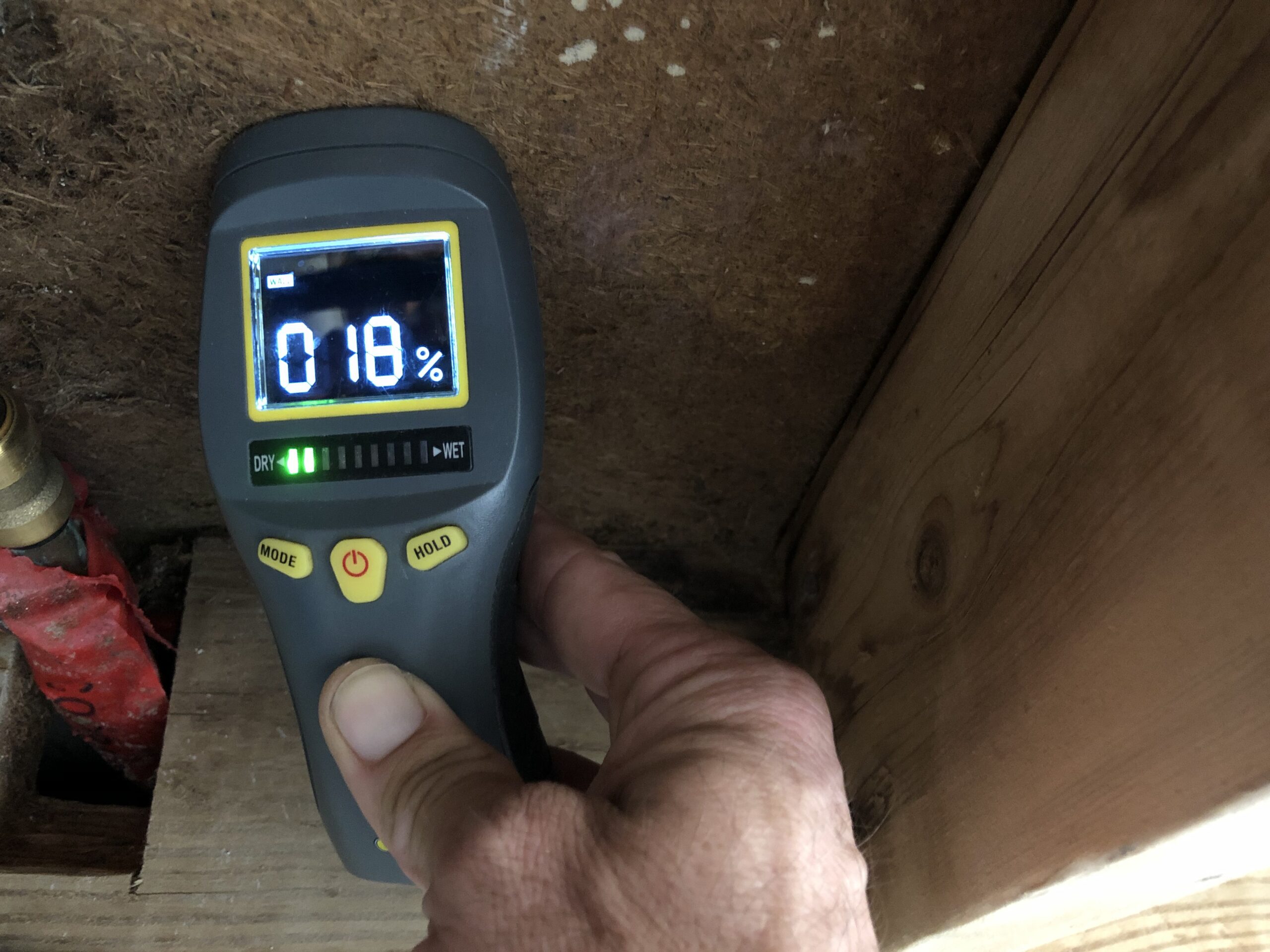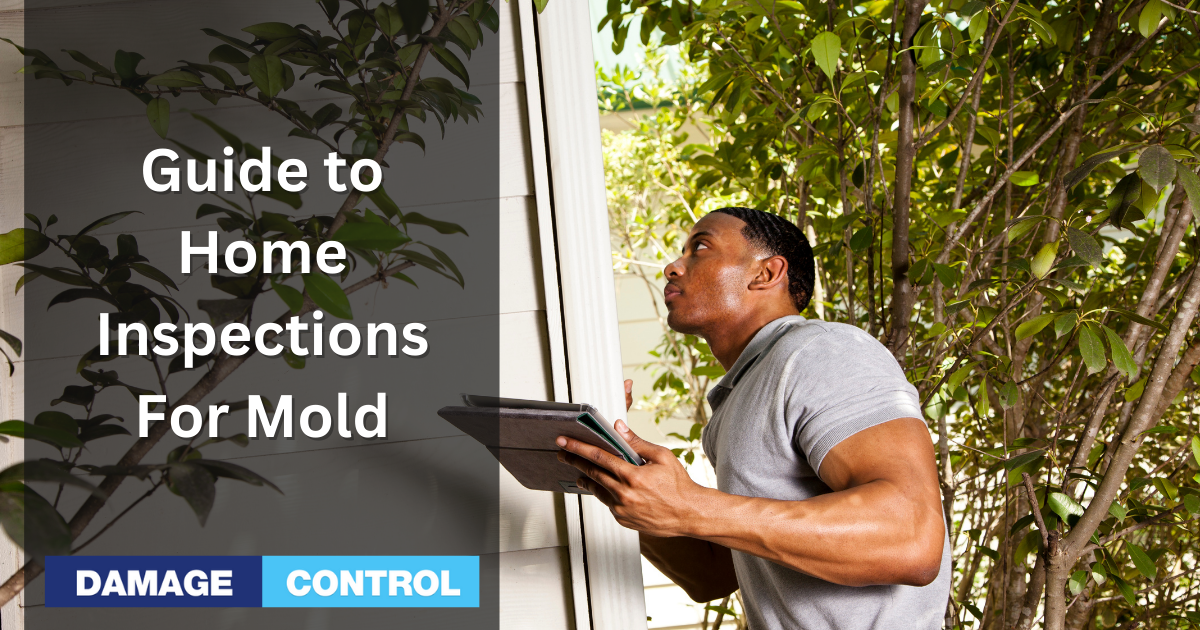In this article, we'll cover the topic of home inspections for mold, when and why you may need one, and the processes involved.
You'll learn how the process is completed, what they inspect visually, what tools are used, how and why testing works, and what you can learn from the test.
We will also cover how the entire process flows, plus a host of other information you need to know about the process from the first call you make to the completion.
What is a Home Inspector?
There are different types of inspections in the home. Most general home inspectors cover the process during a home's sale, purchase, and financing.
These general home inspectors look for basic to major issues in the home that the buyer and financial institutions use to ensure they're not making a disastrous decision with purchasing the said home.
But we're not talking about general home inspectors since they are not qualified to inspect or test for mold in the home or even in commercial or industrial settings. What we're interested in is a mold inspection.
The person who will do a mold inspection is an industrial hygienist who has been trained and has years of experience, specifically with mold.
While rules, regulations, and laws vary from state to state, Florida has some stringent rules and licensing requirements since it's mold central because of the location and its subsequently high average humidity levels and rainfall.
What is Mold?
Mold is a fungus, and there are various strains of mold across the globe, extending from the most northern areas of the Arctic to the most southern areas of the Antarctic.
No place on earth exists where mold does not thrive when they have a food source and moisture to feed on.
For example, snow mold thrives in colder climates, no matter how odd or foreign the idea may be to you. It's alright. I was surprised, too, when learning about snow mold.
The Importance of Home Inspections for Mold
We'll cover mold-related health issues first.
Why should a professional inspect for mold in your home or business? Heath purposes come to mind instantly. Only a handful of different molds have detrimental effects on one's health.
When present, it places you and your family, and even your pets, at substantial risk of diseases and conditions that make life a constant battle.
The good news is that there are effective options if you've been over-exposed to mold. Even with these four articles, we're still scratching the surface of the negative possibilities of mold in a home or business.
Why did I use the phrase “over-exposed”? We'll cover that in the mold testing section. It will all become clear in that specific section below about how mold testing works.
Now, let's move on to the destruction mold can cause in a home.
Here are a few key points to remember.
- Home values will nosedive when there is water damage and a mold infestation in a home.
- Mold infestations in the home suggest water damage or excessive humidity issues.
- If you can see visible mold, there's likely 10x the mold hidden in the walls, under flooring, and in other locations.
- It's costly to remove and correct mold infestations
Mold feeds on organic materials such as wood, paper on drywall, and other organic materials common to construction. Mold seems to love the adhesive used to adhere the wallpaper to existing walls. It's eating it. Slowly but surely, it's destroying the finishes, structure, and much more.
The second part of this equation is mold needs a water source or moisture. That creates water damage, so mold and water work together to destroy anything organic, and believe me, water and moisture can ruin a home ten times faster than mold.
Are Mold Inspectors Required to Be Licensed?
In Florida, yes, they are. The State of Florida licenses Damage Control 911 for inspections, testing, and remediation, but this is not true in all states. This process has no federal standards, leaving the states to regulate this industry, but not every state does.
Check your state and local laws to learn about your location and legal requirements.
You should also ensure the company you choose is fully insured for your protection.
What Home Inspectors Look for During Mold Inspections
Visual Inspections
Visual inspections are exactly that. The inspector will go through every room in your home, looking for potential signs of mold infestation.
They will be looking for visible signs that include, but are not limited to, walls, floors, around showers and bathtubs, kitchen areas, laundry broom, the attic, and crawl space (If applicable).
If there's nothing found, the odor is another indicator that leads them in the right direction. The next step is to use a moisture meter if nothing is found.
Moisture Detection With a Moisture Meter

Moisture meters are a simple tool widely available to homeowners, inspectors, and contractors. They are fairly low-cost and can be an early warning tool for water damage and mold infestations. Most have multiple settings to detect moisture saturation in masonry, wood, and other building materials. We have an article on them where you can learn more about the initial steps in moisture gauging.
They are generally lightweight, can fit comfortably in the average hand, and are accurate at finding excess moisture in walls, floors, shower tiles, and much more. Where you find excess moisture, you will eventually have mold growing.
If the meter shows excess moisture in hidden locations, you can bet the next step is air sampling. This is how testing is done. Any surface that displays 15% or more moisture content is suspect.
Remember we talked about exposure levels above? It's time to cover that.
Air Sampling
Mold reproduces by emitting mold spores into the air. Spores are the offspring of mold, and once released, they float around in the air and winds of our atmosphere. It's their equivalent of a car to travel freely across the globe.
So, how does it work if they're already in the air we breathe? It's a matter of the concentration of airborne mold spores in any given location.
The inspector then tests air samples to see how many parts per million the mold takes up in the air sample. Then, they take another sample outside for a “control sample” to see the difference between the inside and outside the home.
If the indoor sample has an excessive PPM compared to the outside of the home, you have mold, and it's likely not superficial. It's not a matter of if mold will hurt you; it's a matter of the concentration levels in any given room or structure.
Surface Sampling
Surface sampling ensures the remediation process is complete to a safe level before the job ends. We don't want mold or its spores left behind to create another round of damage, so surface testing eliminates the risk of mold returning once the remediation process is complete.
Note: If you are the DIY type, you can buy simple test kits online to test yourself. But you're better off calling a professional testing service.
They have extensive training that you can't possibly know, absent the schooling and experience needed to attain the licenses necessary to perform them correctly.
Remediation Options
The first option is to do it yourself, but fair warning. You may run into many hidden molds beyond your ability to handle the job. Why do I say that? Well, the EPA states if the area infected is over ten sq ft, you need professionals.
The point of this “suggestion” is that if you can see ten sq ft of mold, there's likely ten times the amount you see, but hidden from plain sight. If the air quality shows high concentrations of mold, you likely have more than ten sq ft of mold.
To remediate large areas of mold, you need the proper respirator with filters that can catch spores down to 3 microns in size. That N95 mask is completely worthless against mold, viruses, and bacteria, which can also be in the mold.
I'm pretty sure you don't want a bacterial infection over overexposure to mold. I'm also fairly sure you've read some of the articles linked above on symptoms and diseases from mold.
Don't do it; it's not worth it.
You'll also need other PPE or personal protective equipment. This is in addition to the respirators and proper filters. Then, we need HEPA systems to set up negative air systems to remove airborne spores during remediation. Each time you touch or move something with visible mold, you launch millions of spores into the air.
How much does mold remediation cost?
How much does it cost to have mold remediated? The national average $10 and $25 per square foot. That's a lot of money for a preventable problem. But that's alright since most mold remediation jobs are caused by leaks caused by faulty plumbing and water lines bursting or breaking.
If it's a catastrophic event that causes the damage, your homeowners' insurance will likely foot the bill, less deductibles of course. Mold as a standalone is generally not covered.
Conclusion
Now, you're armed with the needed information to make an educated decision on mold inspections, testing, and remediation. Use common sense and the information here to make the correct calls confidently.

